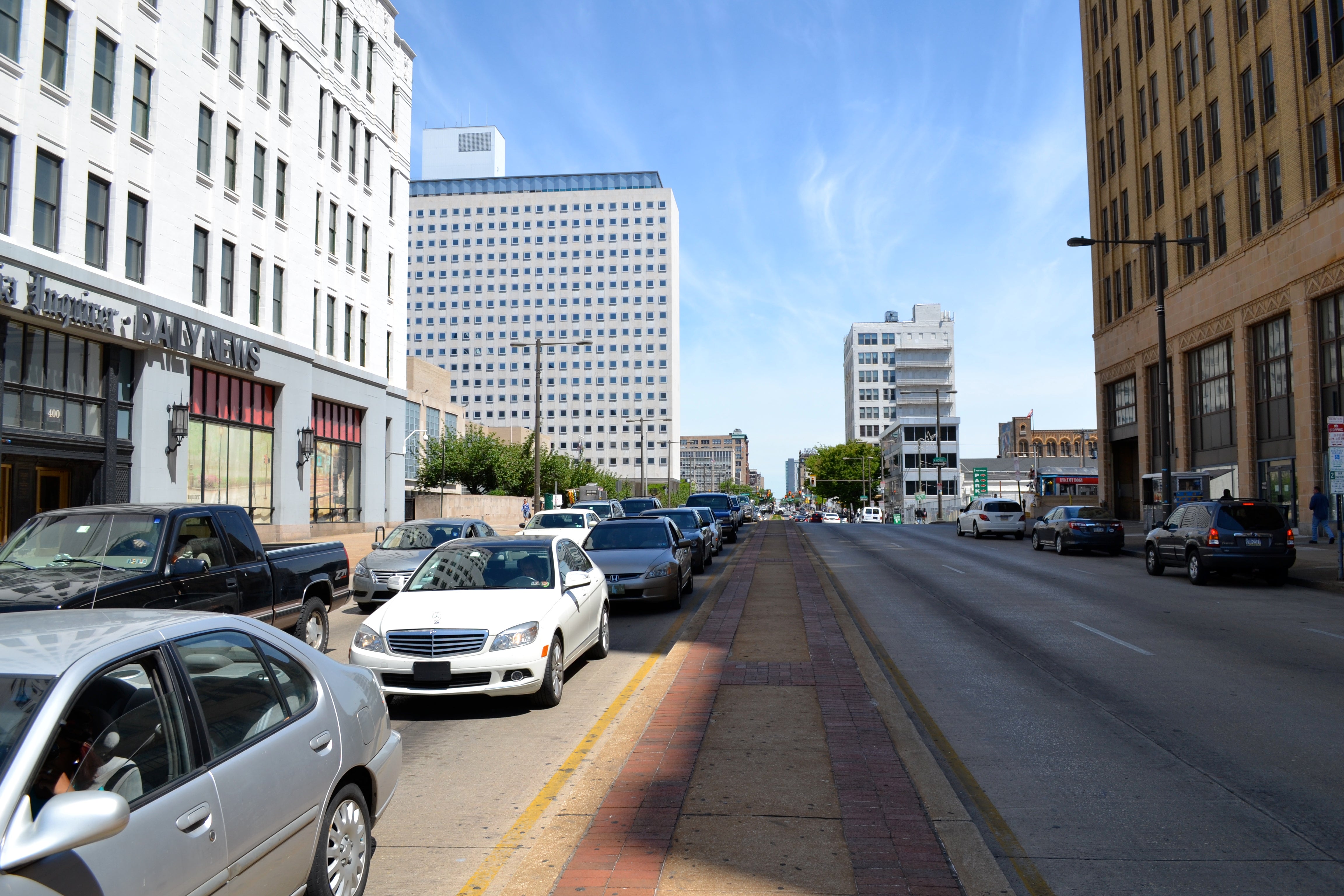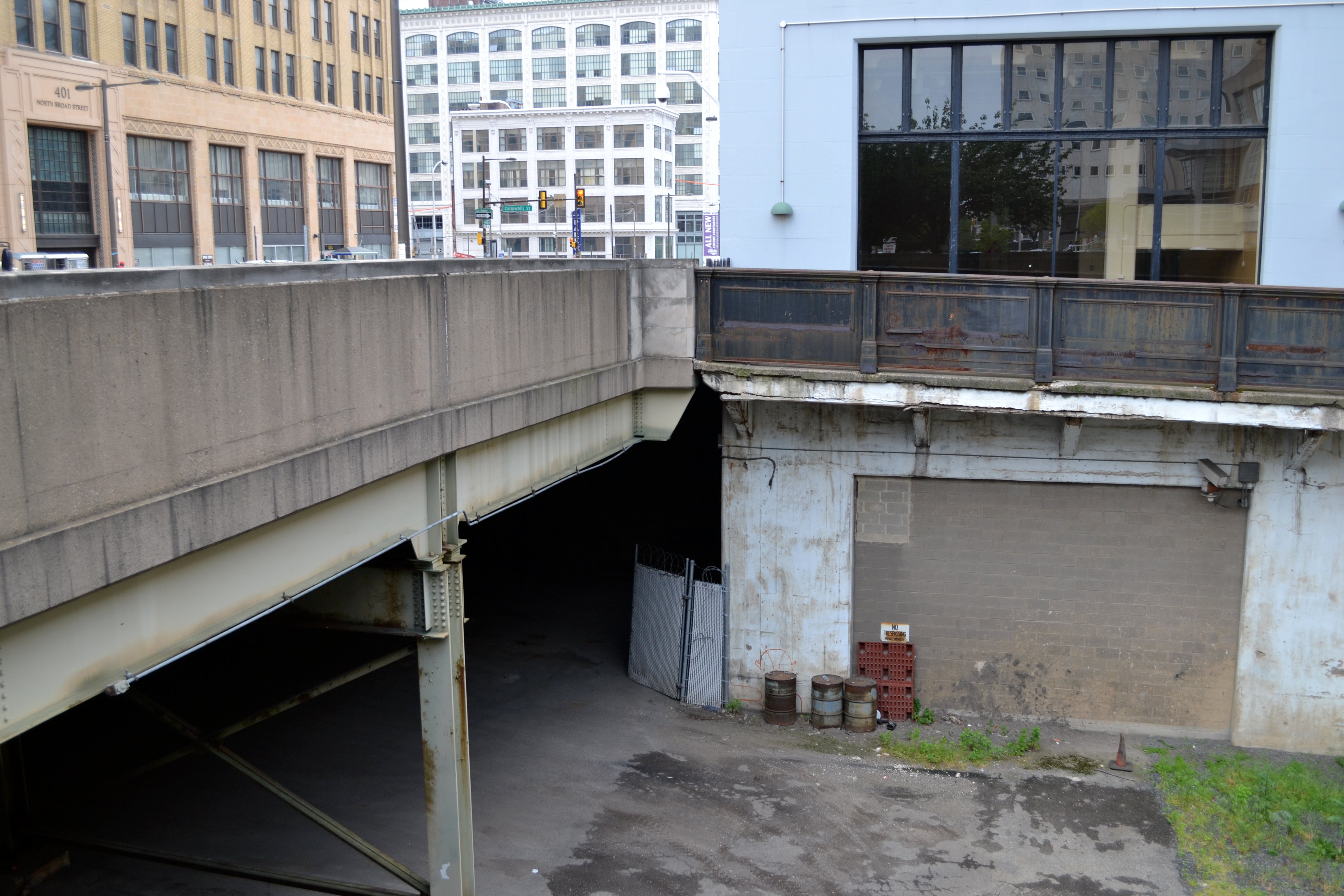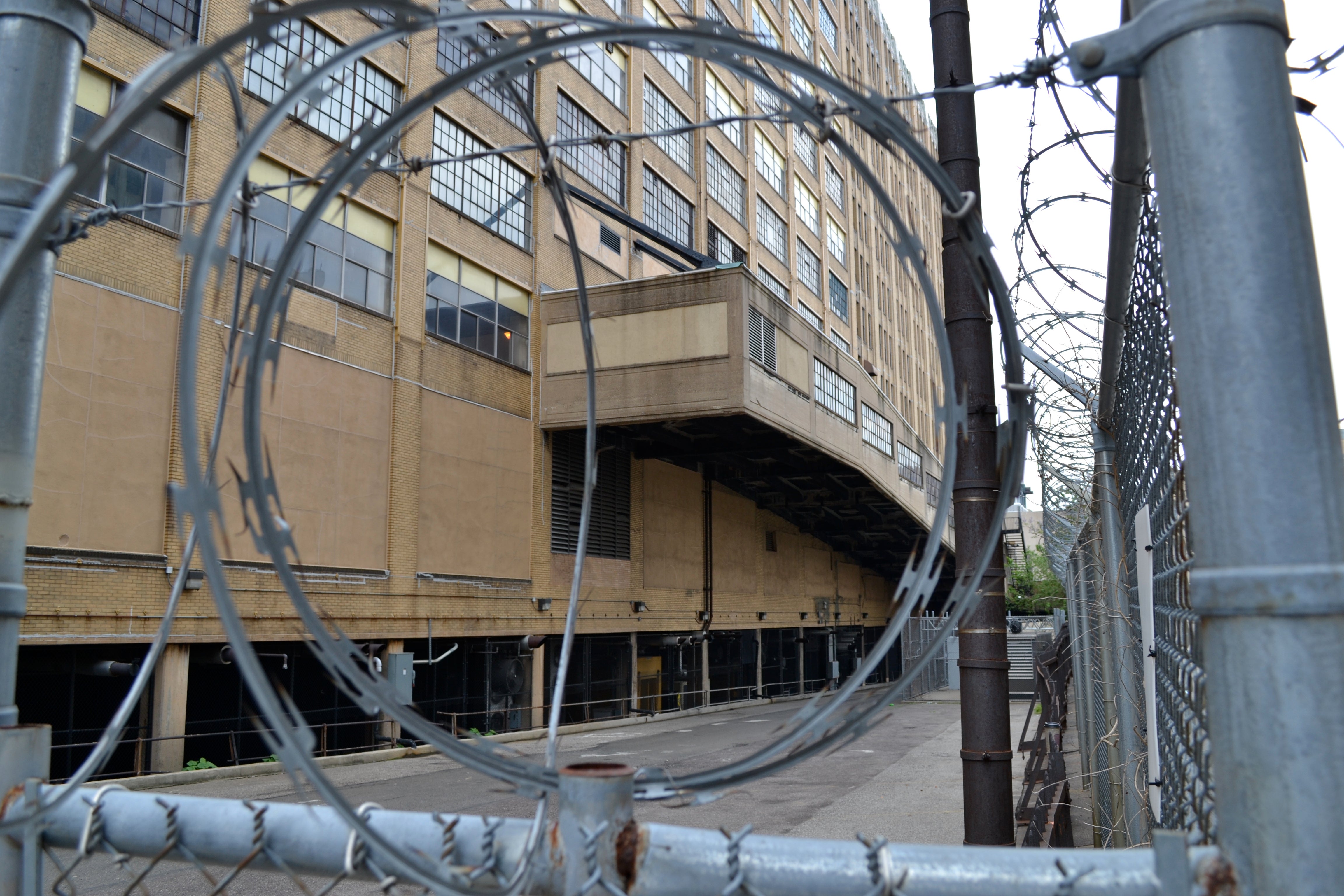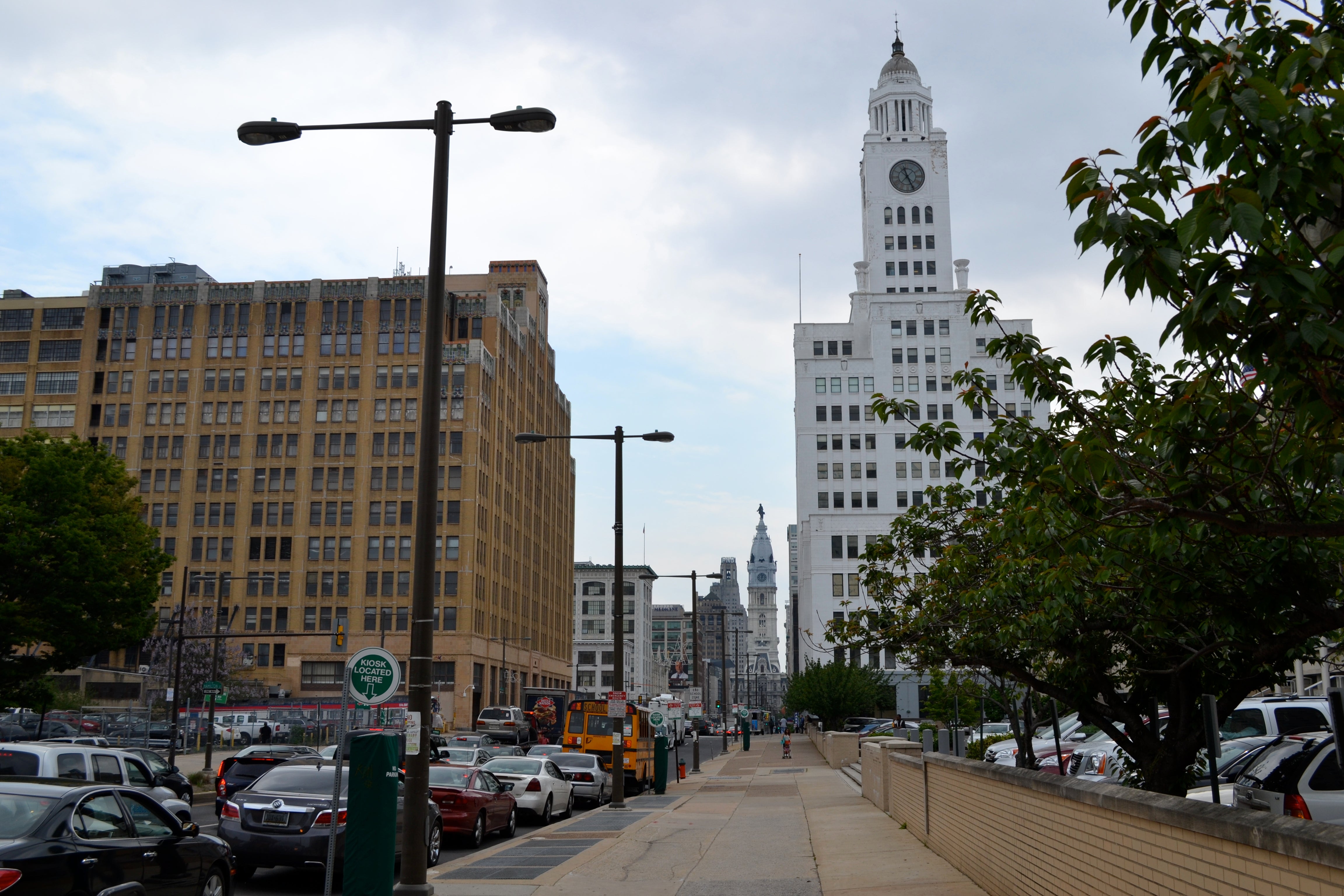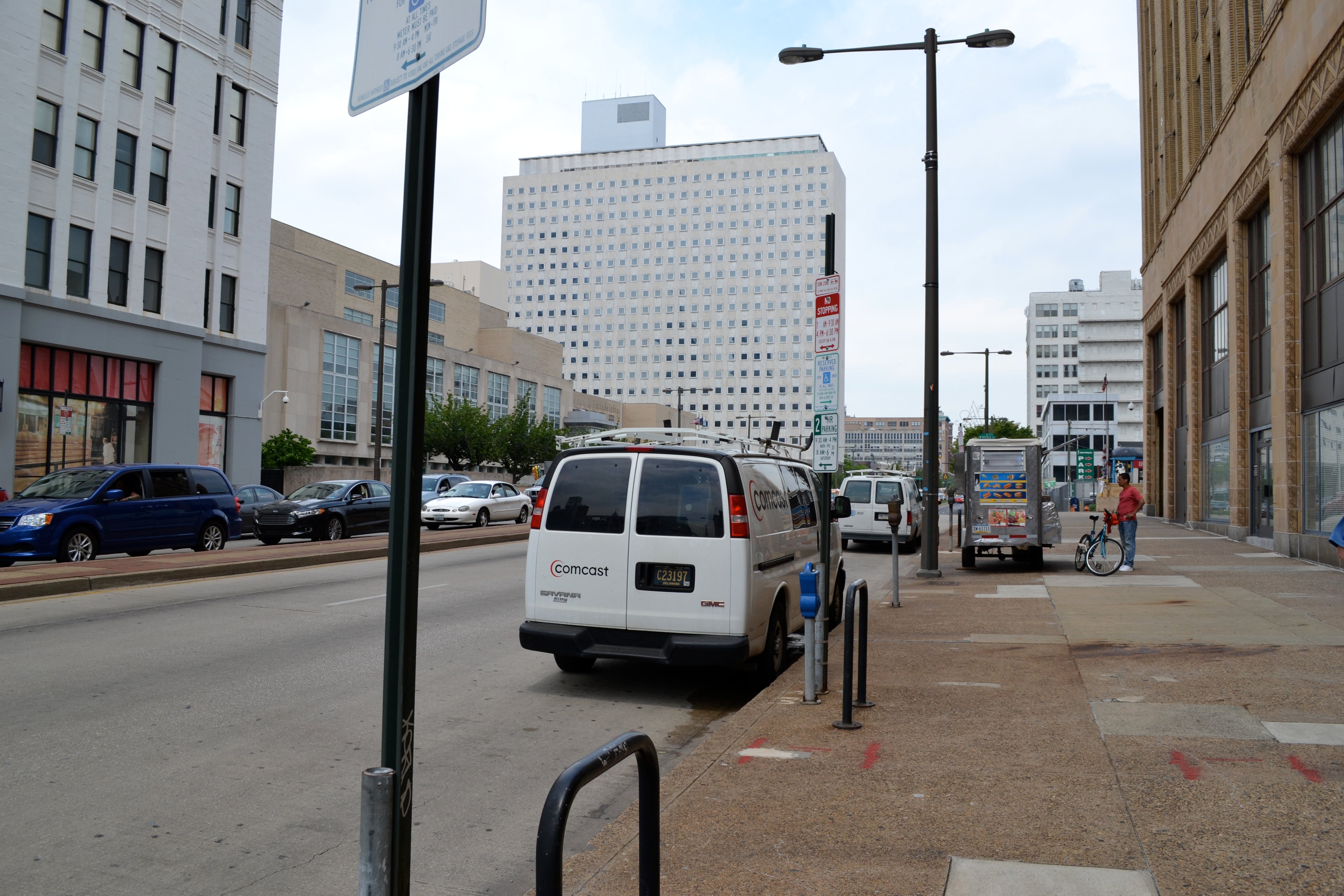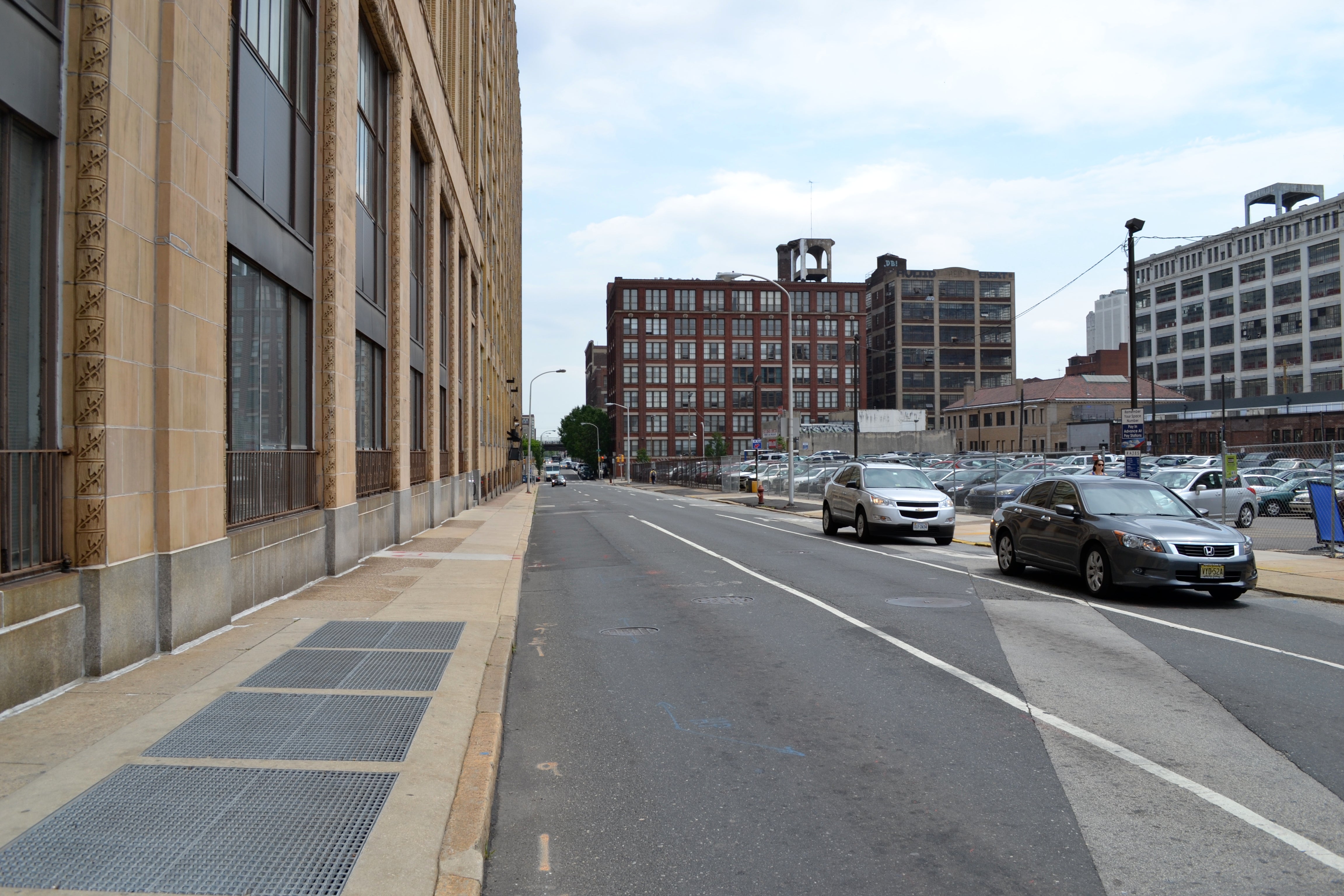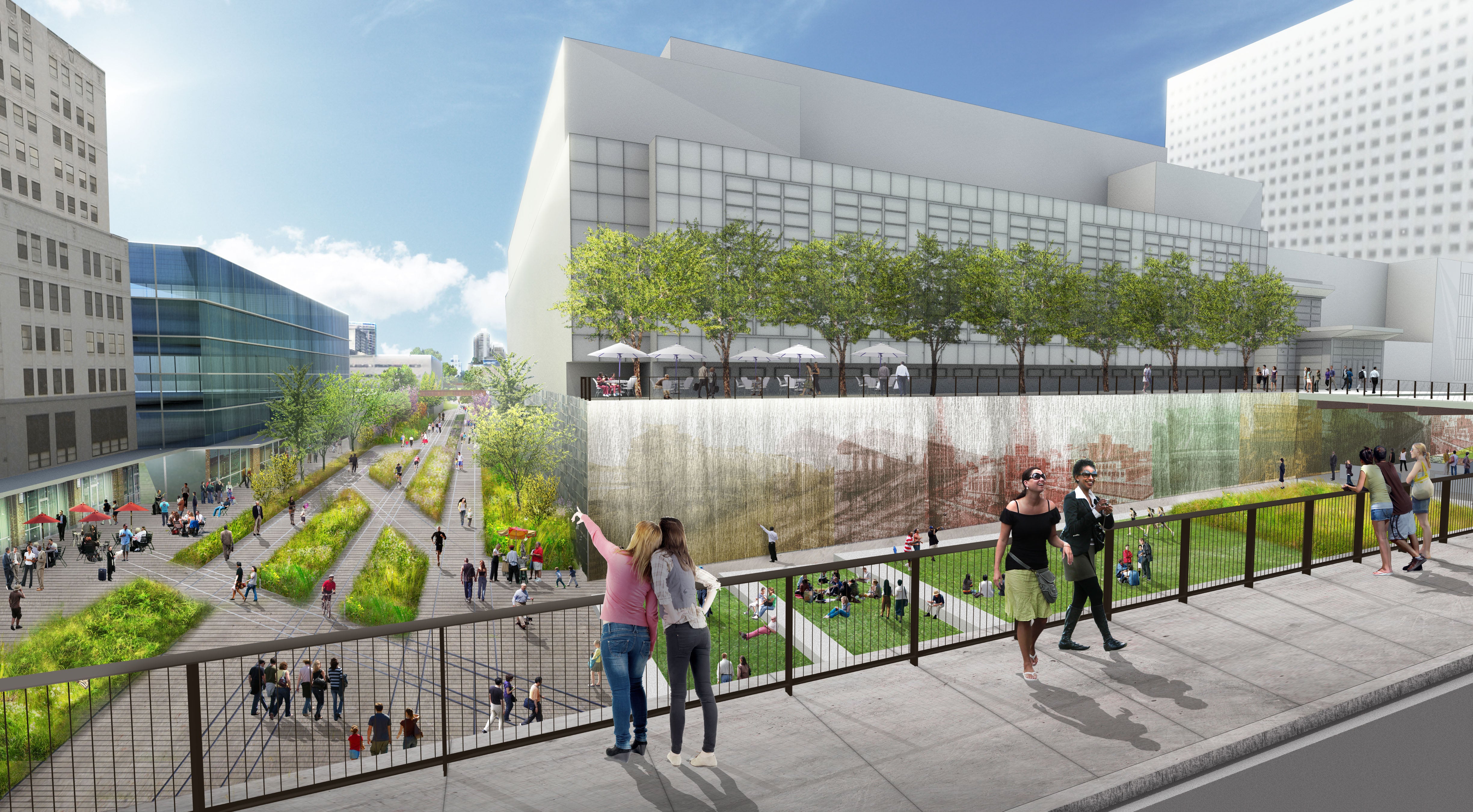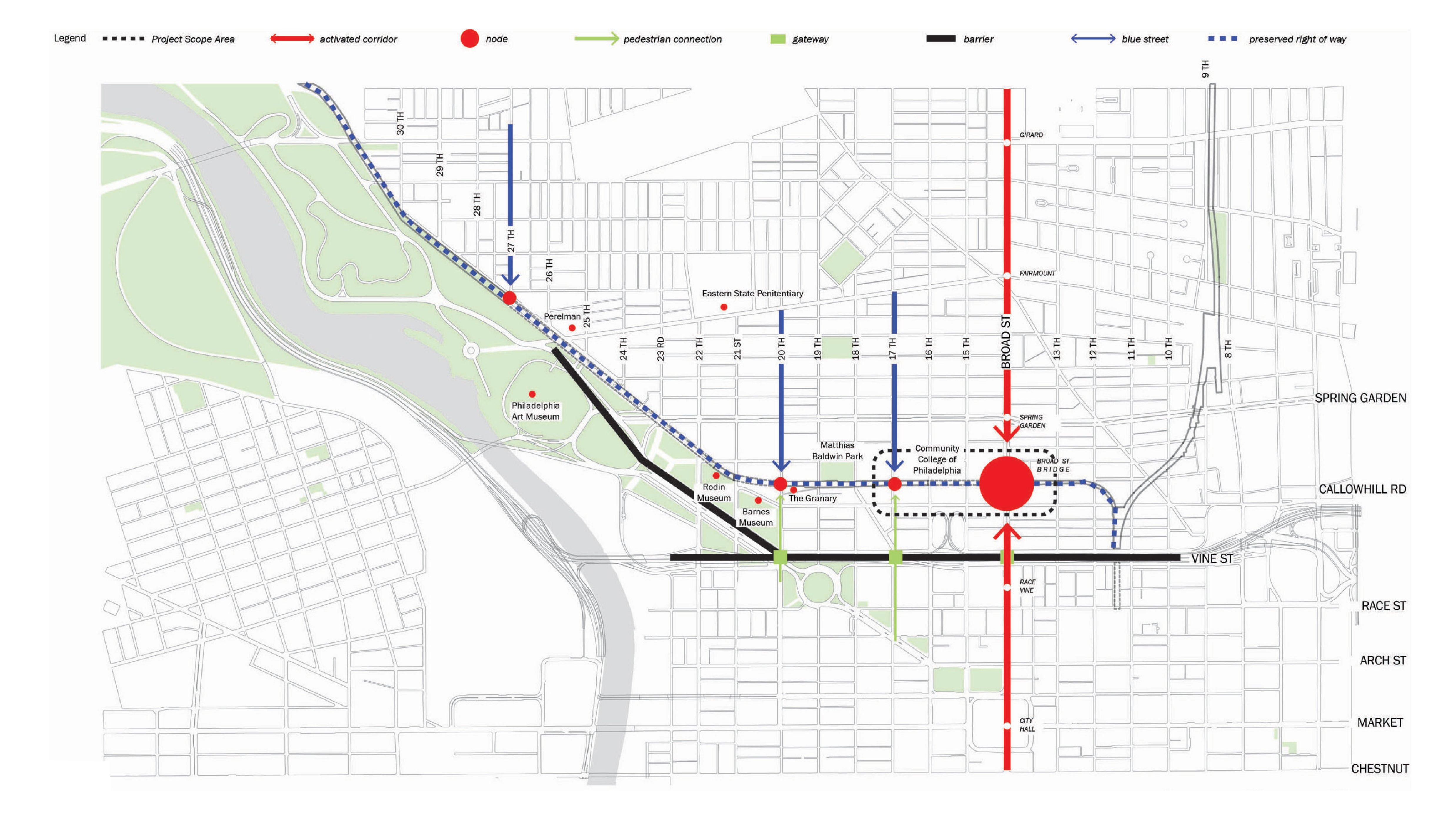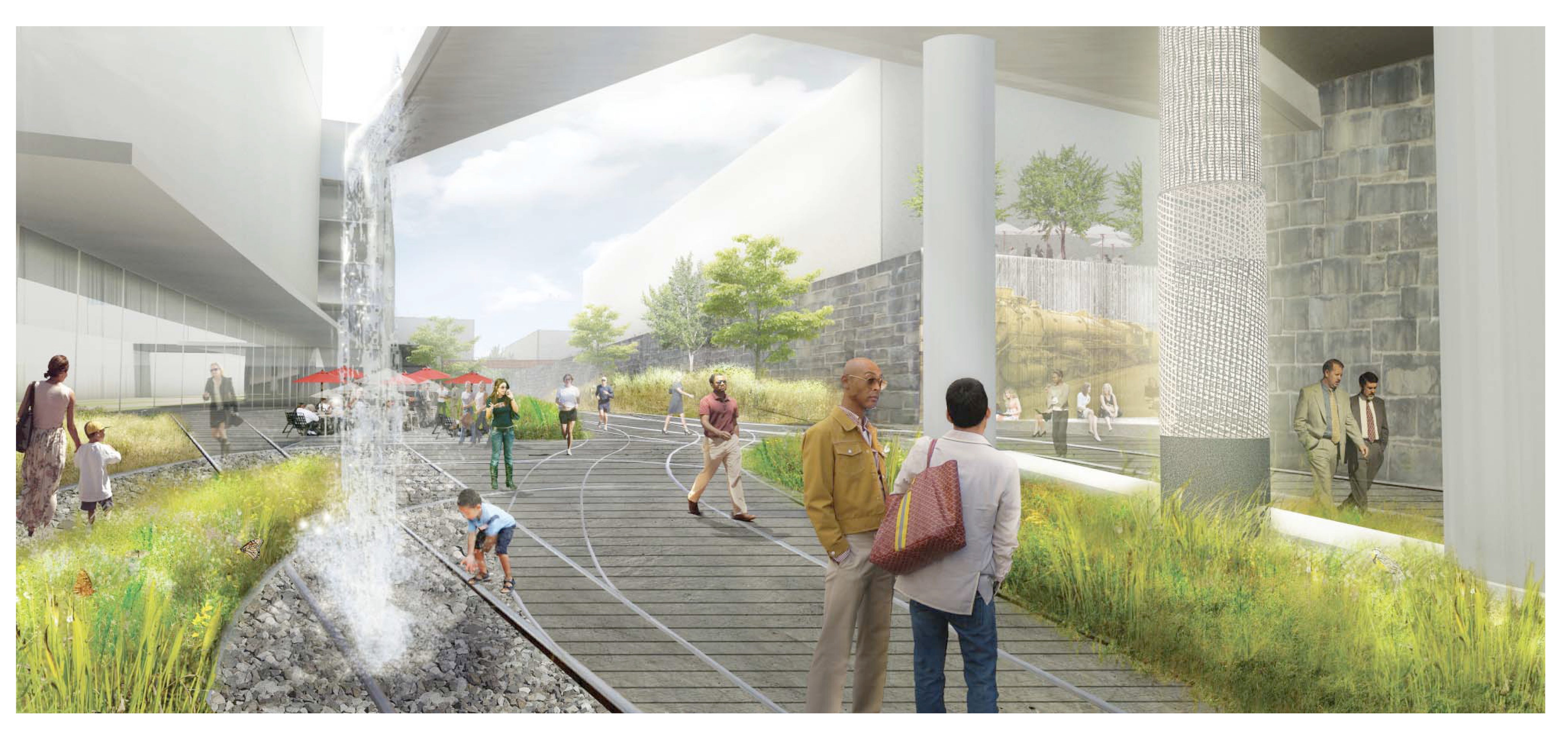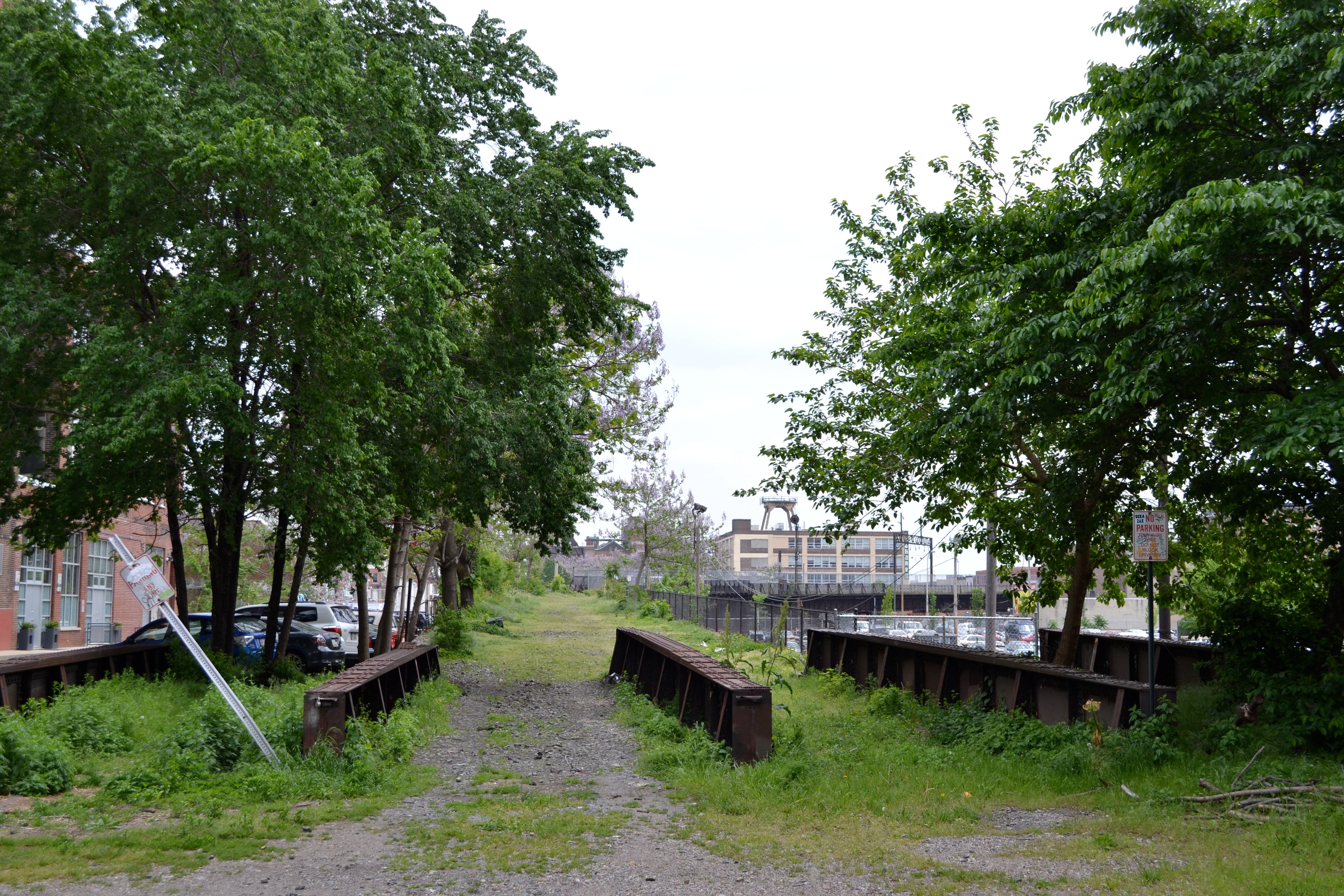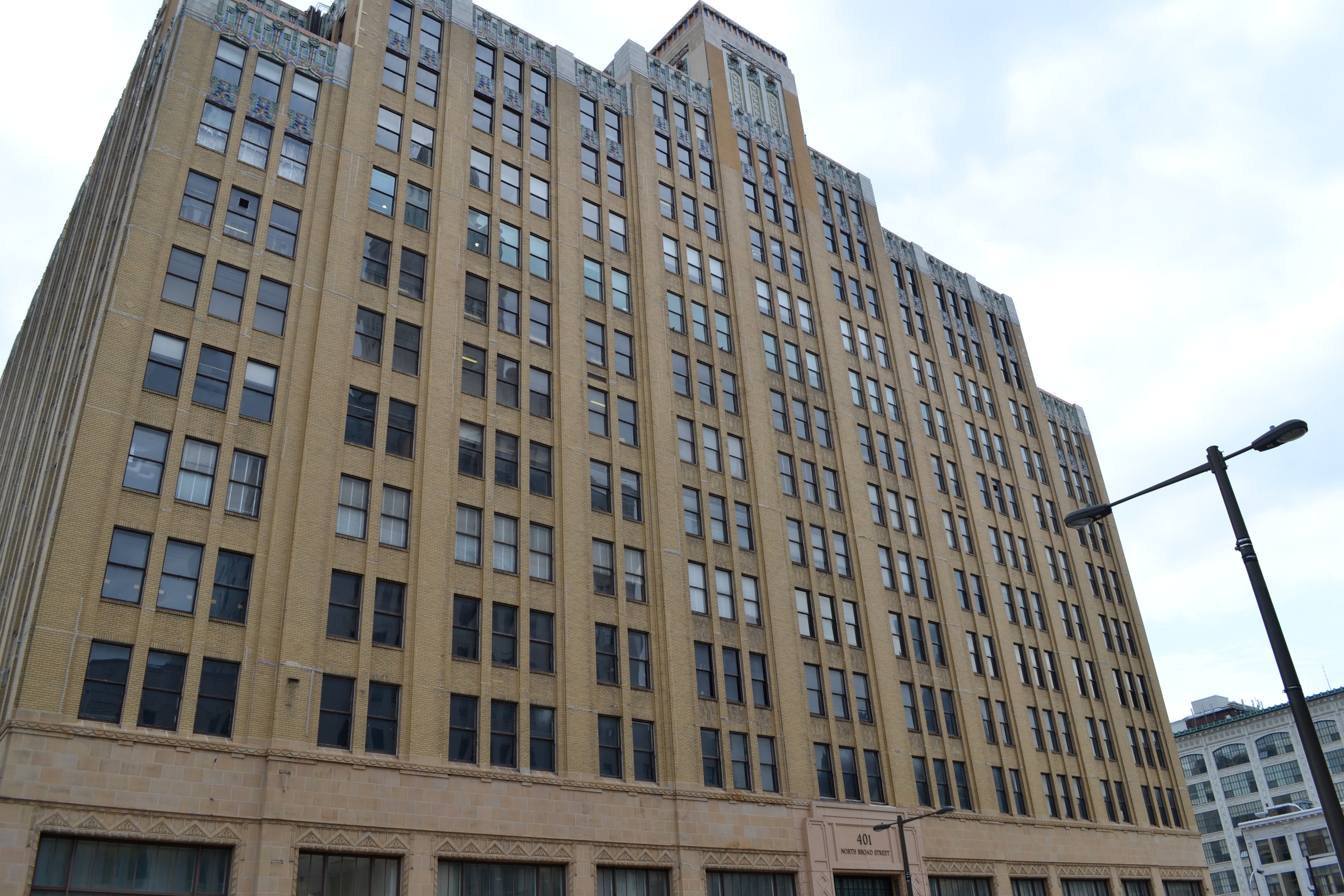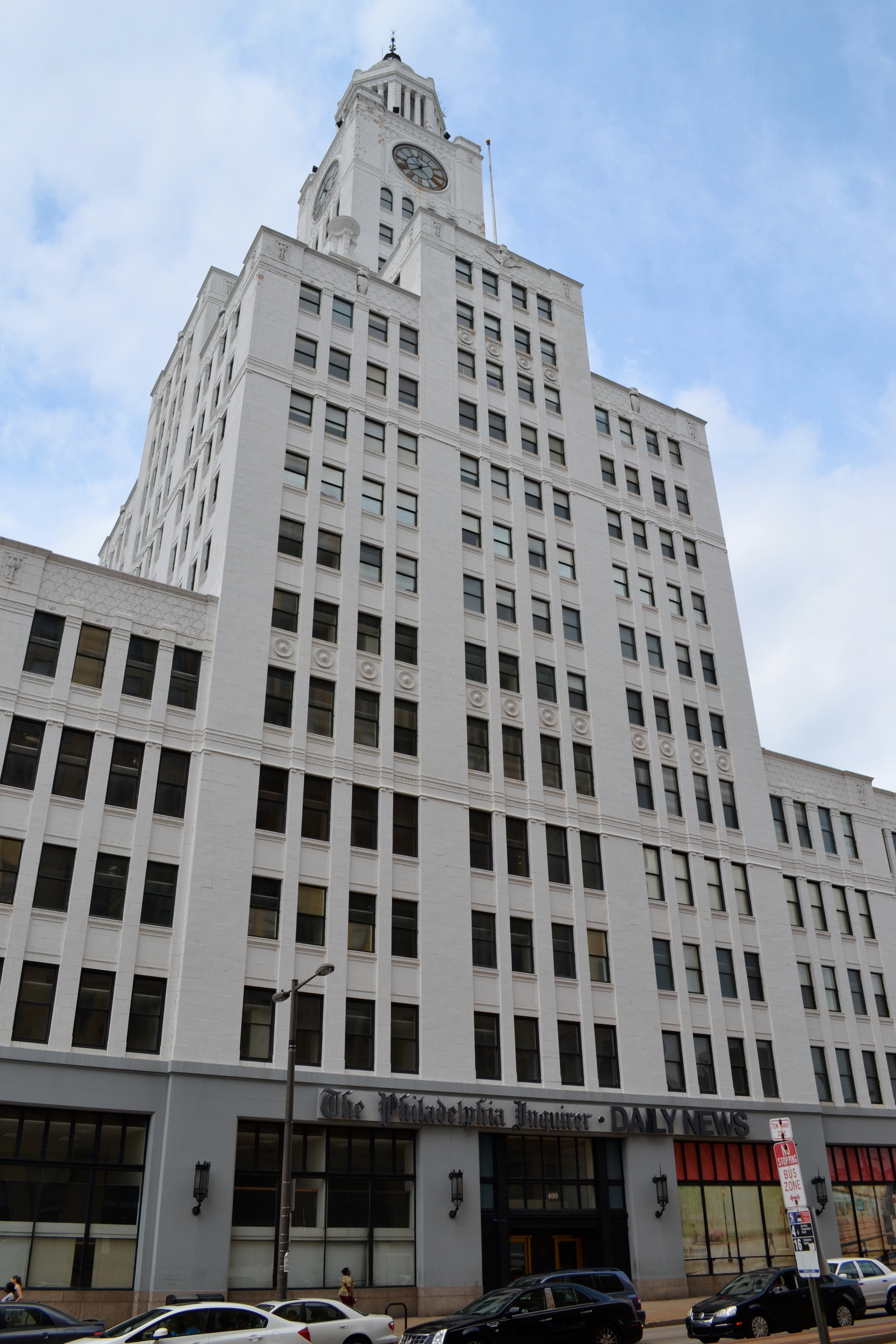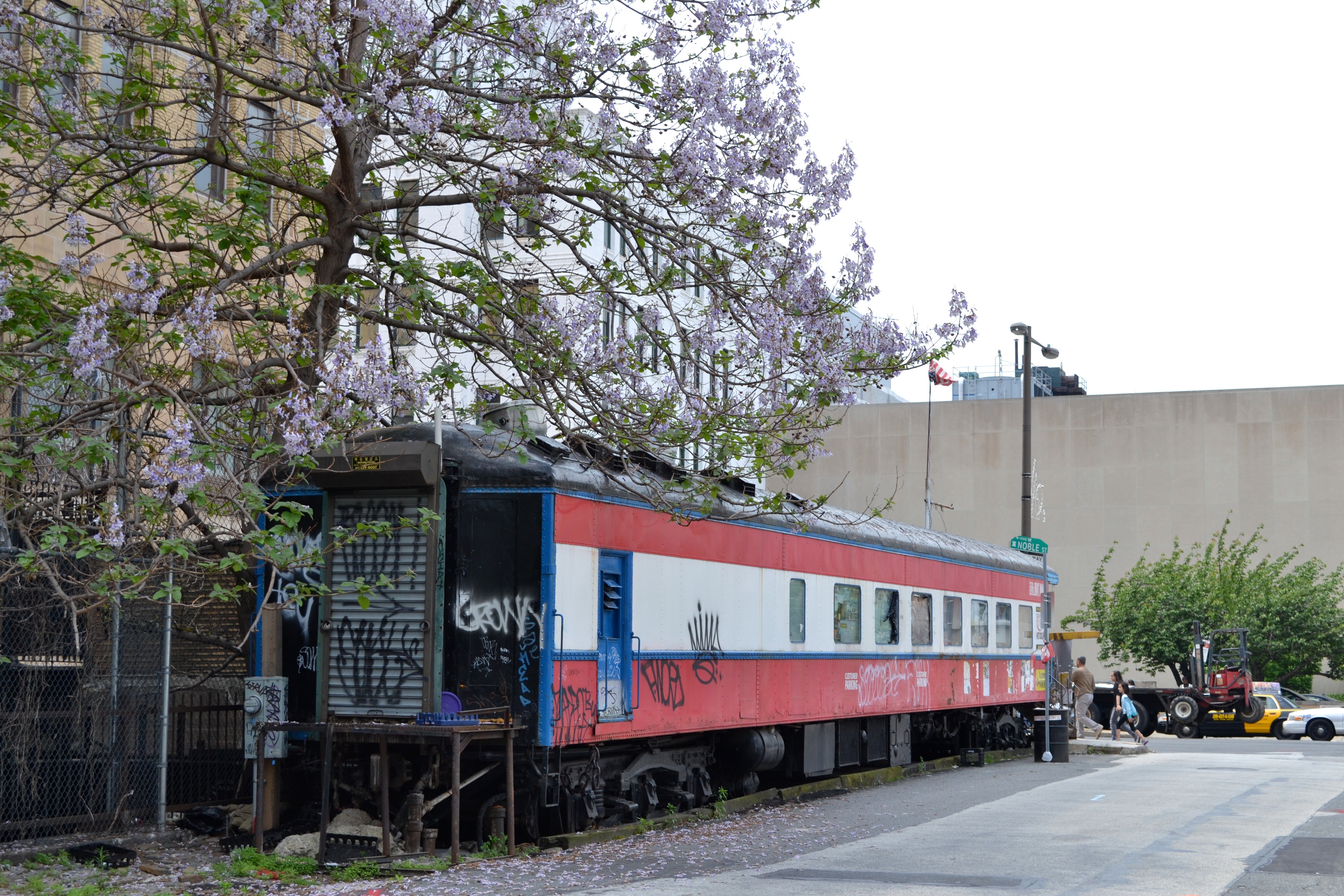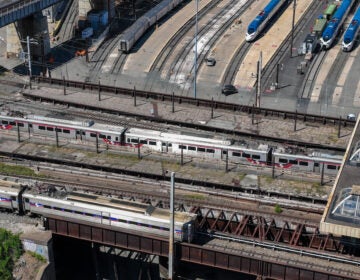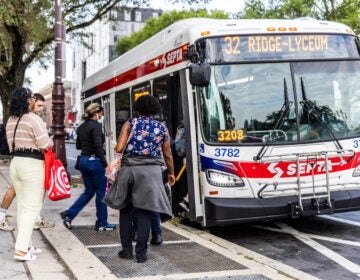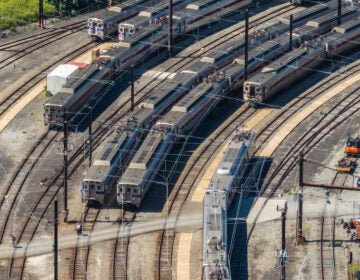PennDOT to rebuild hidden Broad Street bridge
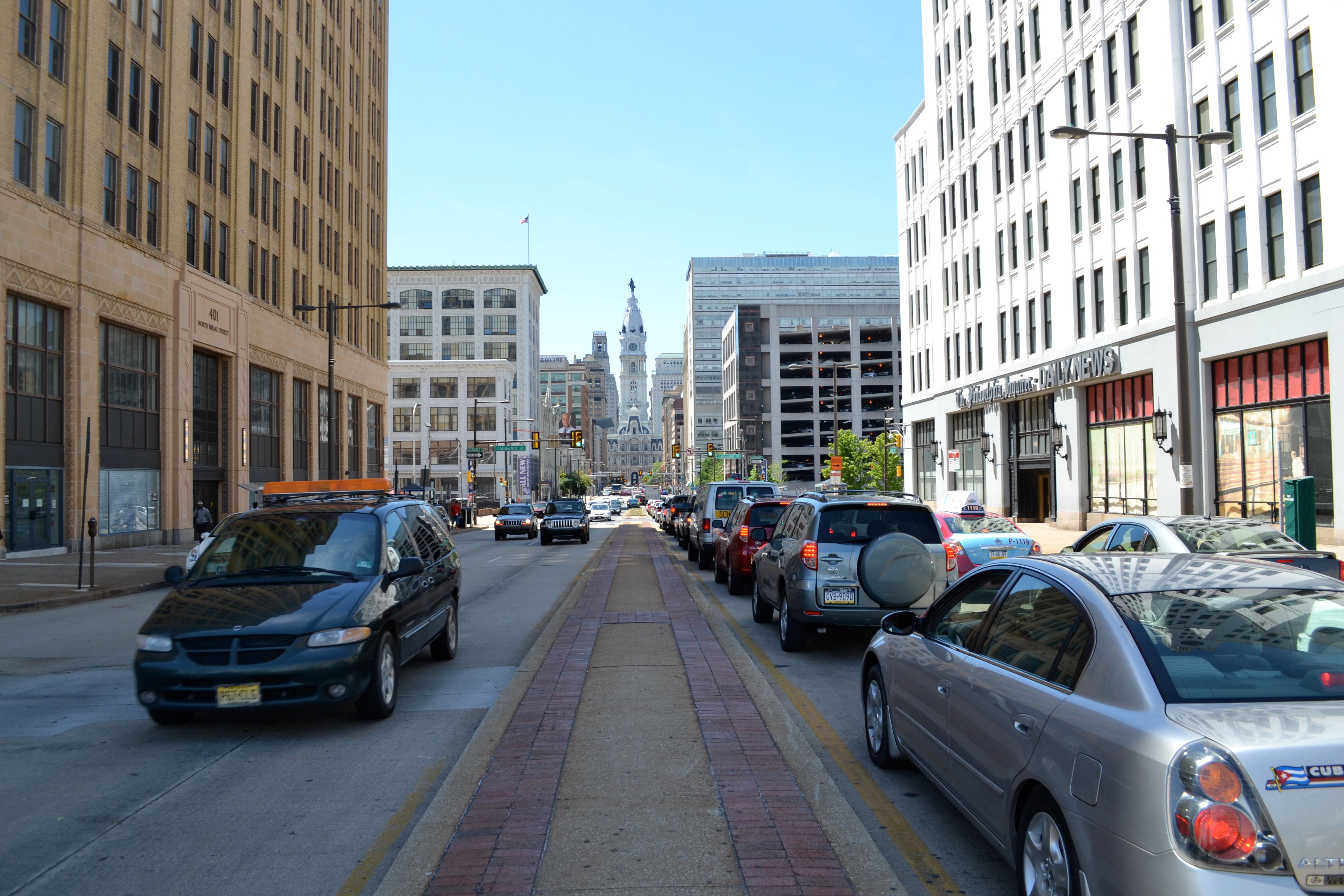
Many Philadelphians have driven over one of the city’s structurally deficient spans countless times and not even known it was a bridge.
But when imminent construction begins to disrupt traffic over that structure, drivers may be painfully reminded that the section of Broad Street between Callowhill and Noble streets is in fact a corroded bridge.
The structure was built in 1898 to cross the Reading Company’s rail tracks. Those tracks are long abandoned and with buildings fronting Broad Street on either side, the bridge today is invisible to the unknowing eye.
Now, due to severe decay, the bridge needs to be replaced. That means the Callowhill to Noble portion of Broad Street will be impacted. In addition to affecting vehicular traffic, the project has implications for groups looking to reuse the area under and around the bridge for a linear park or bus rapid transit line.
Scope of the project
Above ground, 21,000 vehicles cross the bridge daily.
Below ground, three of the bridge’s five spans are used as a parking facility with access to the buildings at 400 and 401 North Broad Street, the former Inquirer building and former Terminal Commerce Building. The other two spans are relatively empty but offer some daylight and access to the above ground world. The Broad Street Line subway, built after the bridge, runs beneath the structure.
Initially PennDOT considered filling all or some of the spans, but multiple parties opposed that option. Instead, PennDOT will replace the entire steel superstructure and portions of the substructure.
When the $12 million construction phase begins, it will take roughly two years, said Joe Sullivan, an associate vice president at Ammann & Whitney, the prime consultant PennDOT contracted for design. Sullivan shared the preliminary design with members of the Logan Square Neighborhood Association (LSNA) early this week.
During construction, PennDOT will maintain two lanes of traffic in each direction, and at least one sidewalk will be open for pedestrians, Sullivan told LSNA. One lane in each direction, those currently used for off-peak parking and peak hour travel, will be eliminated during construction. One lane of Callowhill Street, just east of Broad Street, will also close.
Subway service will not be disrupted due to construction.
The preliminary design phase is just now wrapping up, and final design will take an estimated one year and three months. That puts groundbreaking, at the earliest, sometime in 2015.
Sullivan acknowledged that this is no simple project. For starters, he said, “We really don’t have parapets like a traditional bridge. We have doors into buildings.”
Opposition to filling the bridge
The former rail cut that the Broad Street bridge spans is known as the City Branch, the three-mile, below-grade path that runs through the city from this bridge into Fairmount Park. As part of its Philadelphia2035 Central District Plan, which is still being finalized, the Philadelphia City Planning Commission envisions turning the former rail cut into a bus rapid transit corridor.
A separate group, the Friends of the Rail Park, hopes to convert the City Branch into a linear park, turning the area beneath and immediately west of the Broad Street bridge into a “grand welcome mat into the City Branch,” said Leah Murphy, a senior associate at Interface Studios and board member of the Friends of the Rail Park.
“If you look at that three-mile route, having a strong connection to Broad Street is one of the biggest opportunities,” Murphy said.
For either the bus rapid transit or the rail park to utilize this connection, the bridge needs to remain open.
The owners of the 400 and 401 North Broad Street properties have vested interest in keeping the space beneath the bridge open because it provides both parking for and access to the buildings. SEPTA also spoke out against filling the structure because it is immediately above the Broad Street Line subway.
“We had a feeling if we impacted the subway in any way, we might own the subway,” Sullivan said.
When asked who actually owns the bridge, Sullivan said, “The city will tell you they own it, and PennDOT will probably say they own it because they have to replace it.”
Broad Street Bridge History
The Reading Company built the bridge in 1898 when it put its rails in the below grade cut just north of Center City. At that time, this Broad Street bridge looked like most other bridges of that era and allowed traffic to flow, uninterrupted along Broad Street, above the tracks.
Changes came in the 1920s. In 1926 The Inquirer Building was built directly to the west of the bridge, and by 1930 the Terminal Commerce Building was completed directly to the east of the bridge. Both buildings were built over the Reading Railroad tracks and ink and paper was delivered to The Inquirer by rail. The lower levels of the Terminal Commerce Building became a freight station that trains could pull into after passing beneath the bridge.
The Broad Street subway was built in 1925 and was placed beneath the bridge, with footings for the bridge attached to the subway’s ceiling.
By 1930, the bridge was encased by the Inquirer Building to the west, the Terminal Commerce Building to the east and the subway below. The buildings essentially hid the bridge from plain sight.
Though replacing the bridge is necessary, PennDOT plans to keep it hidden. When an LSNA member asked if, after all of the proposed construction, people will notice that this portion of Broad Street is a bridge, Sullivan said no, hopefully not.
WHYY is your source for fact-based, in-depth journalism and information. As a nonprofit organization, we rely on financial support from readers like you. Please give today.



